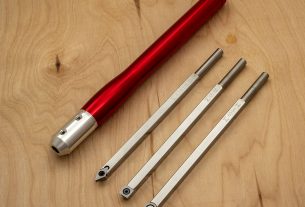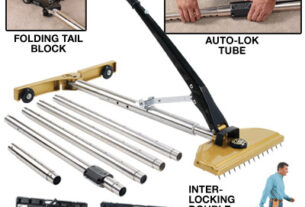If you’re in the market for a chipping tool, you’ve come to the right place. Chipping tools are essential for any DIY enthusiast or professional contractor who needs to remove paint, rust, or other materials from surfaces quickly and effectively. In this article, we’ll cover everything you need to know about chipping tools, including types of chipping tools, how to choose the best one for your needs, and maintenance tips. So let’s dive in!
Types of Chipping Tools
There are several types of chipping tools on the market today. Each one has its unique features that make it suitable for specific tasks. Here are some of the most popular types of chipping tools:
1. Needle Scalers
Needle scalers use a series of thin needles to remove rust and paint from surfaces. They’re ideal for cleaning large areas quickly and efficiently.
2. Chisels
Chisels are hand-held tools with sharp edges that can be used to chip away at materials like concrete and brick.
3. Pneumatic Hammers
Pneumatic hammers use compressed air to drive a piston back and forth rapidly, creating a hammering action that can break up concrete, asphalt, and other hard materials.
4. Rotary Hammers
Rotary hammers are similar to pneumatic hammers but have a rotating mechanism that allows them to drill through hard surfaces like concrete.
5. Demolition Hammers
Demolition hammers are powerful machines that can break up solid structures like walls and floors.
How to Choose the Best Chipping Tool for Your Needs
Choosing the right chipping tool depends on several factors such as the type of material you need to remove, the size of the area you’re working on, and your budget. Here are some things to consider when choosing a chipping tool:
1. Type of Material
Different chipping tools are designed to remove different materials. For example, needle scalers are ideal for removing rust and paint, while demolition hammers are better suited for breaking up concrete and other solid structures.
2. Size of the Area
If you’re working on a large surface area, you’ll need a chipping tool that can cover more ground quickly, like a pneumatic hammer or rotary hammer. If you’re working on a smaller area, a hand-held tool like a chisel might be more appropriate.
3. Budget
Chipping tools can range in price from less than $50 to several hundred dollars or more. Consider your budget when choosing a tool but don’t sacrifice quality for affordability.
Maintenance Tips
Proper maintenance is essential for keeping your chipping tool in top condition and prolonging its lifespan. Here are some maintenance tips to follow:
1. Clean the Tool After Use
After using your chipping tool, clean it thoroughly with a damp cloth to remove any debris and prevent rust from forming.
2. Lubricate Moving Parts
Regularly lubricating moving parts like pistons and gears will help keep them functioning properly and prevent wear and tear.
3. Store the Tool Properly
Store your chipping tool in a dry, cool place where it won’t be exposed to moisture or extreme temperatures.
4. Replace Worn Out Parts
If any parts of your chipping tool become worn out or damaged, replace them immediately to prevent further damage to the tool.
In Conclusion
Choosing the right chipping tool is essential for any DIY enthusiast or professional contractor who needs to remove paint, rust, or other materials from surfaces quickly and effectively. By considering factors such as the type of material you need to remove, the size of the area you’re working on, and your budget, you can find the perfect chipping tool for your needs. Remember to follow proper maintenance tips to keep your tool in top condition and prolong its lifespan. For more information on chipping tools, check out the wiki reference below.
Wiki Reference: https://en.wikipedia.org/wiki/Chisel




